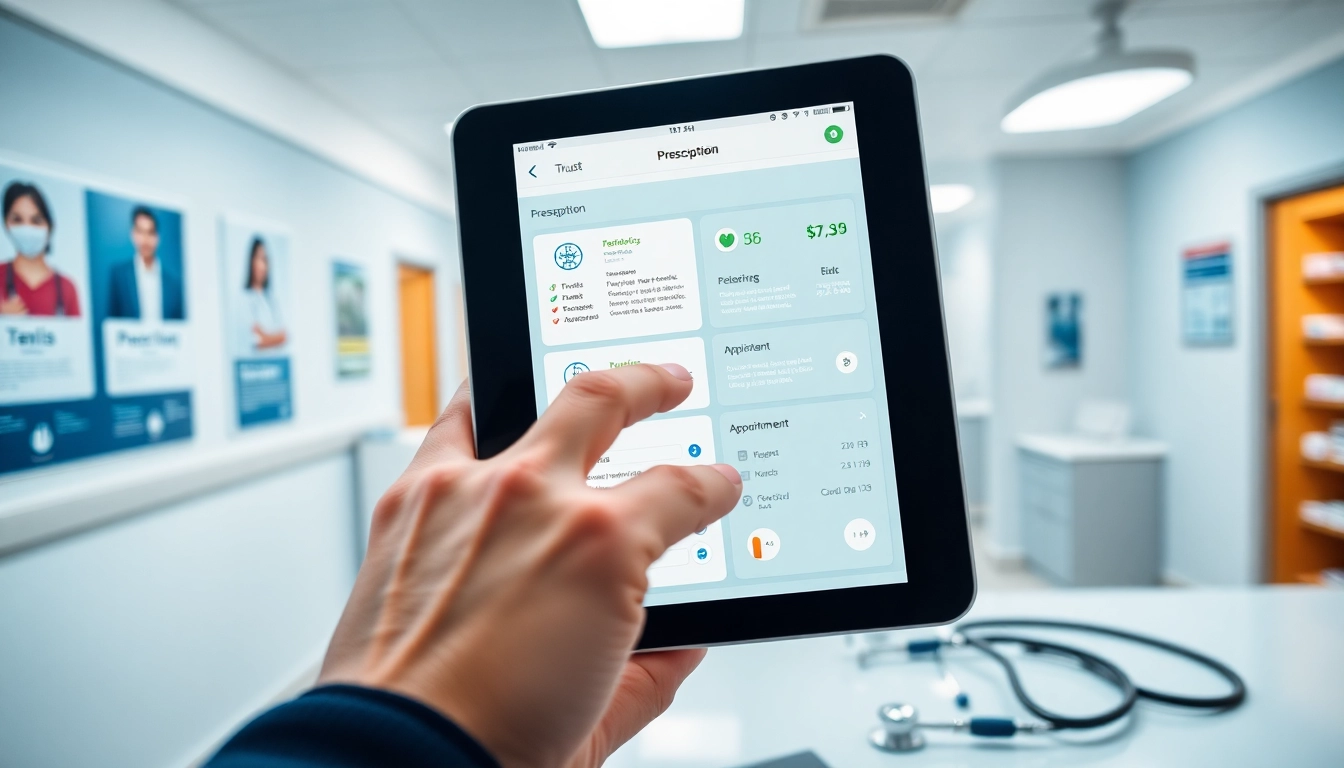Understanding the Mechanism of E-Prescribing
E-prescribing, or electronic prescribing, is a modern healthcare solution that streamlines the process of writing and managing prescriptions through digital platforms. As healthcare continues to evolve with technology, understanding how does eprescribing work becomes increasingly important for healthcare professionals, patients, and pharmacies alike. This comprehensive guide delves into the various facets of e-prescribing, its workflow, benefits, challenges, and future trends.
What is E-Prescribing and How Does E-Prescribing Work?
The Definition and Purpose of E-Prescribing
E-prescribing is defined as the computer-based generation, transmission, and filling of a medical prescription. This system is designed to replace traditional paper prescriptions, offering improved accuracy and efficiency in prescription management. E-prescribing systems allow healthcare providers to electronically send prescriptions, reducing the risk of errors associated with handwritten scripts.
Benefits of Utilizing E-Prescribing Systems
- Improved Accuracy: By eliminating handwriting errors, e-prescribing enhances the clarity of prescriptions, leading to better patient outcomes.
- Increased Efficiency: E-prescribing significantly reduces the time it takes to process prescriptions, allowing healthcare providers to spend more time with patients.
- Enhanced Patient Safety: Automated systems include built-in alerts for potential drug interactions, allergies, and other safety concerns.
- Cost-Effectiveness: E-prescribing can lower administrative costs and reduce the incidence of medication errors, leading to overall healthcare savings.
Key Components of an E-Prescribing System
An effective e-prescribing system typically includes several key components:
- User Interface: A straightforward interface for healthcare providers to enter prescription details.
- Pharmacy Database: A comprehensive list of pharmacies that the system can connect with for prescription transmission.
- Medication Database: An up-to-date repository of medications, dosages, and potential drug interactions.
- Security Measures: Robust security protocols to ensure patient data confidentiality and compliance with regulations.
The Process of E-Prescribing Workflow
Step-by-Step Guide on How Does E-Prescribing Work
The e-prescribing workflow follows several critical steps that facilitate seamless prescription management:
- Patient Consultation: The process begins during the patient consultation when the healthcare provider decides a prescription is necessary.
- Prescription Entry: The provider inputs prescription details into the e-prescribing system.
- Verification: The system checks for potential issues, such as allergies and drug interactions, prompting alerts if applicable.
- Transmission: Once verified, the prescription is electronically transmitted to the selected pharmacy.
- Pharmacy Fulfillment: The pharmacy receives the prescription, prepares the medication, and notifies the patient when it is ready.
- Patient Pickup: The patient can pick up their medication or arrange for delivery, depending on the pharmacy’s services.
Integration with Electronic Health Records (EHR)
E-prescribing systems are often integrated with Electronic Health Records (EHR) to facilitate seamless data exchange. This integration allows providers to access a patient’s complete medical history, ensuring that prescriptions are tailored to individual patient needs. With EHR integration, providers can quickly review medication histories, verify allergies, and make informed decisions efficiently.
Ensuring Prescription Accuracy in the E-Prescribing Workflow
To maintain high levels of prescription accuracy, e-prescribing systems utilize various methods:
- Automated Checks: Systems perform automatic checks for drug interactions, allergies, and duplicate medications, reducing the likelihood of errors.
- Standardized Terminology: Use of standardized medication names and dosages enhances communication among providers, pharmacies, and patients.
- Audit Trails: E-prescribing systems keep detailed records of prescriptions that allow for easy tracking and accountability.
Challenges and Solutions in E-Prescribing
Common Barriers to Effective E-Prescribing
While e-prescribing presents many advantages, it is not without challenges. Common barriers include:
- Technology Adoption: Some providers resist adopting new technologies due to familiarity with traditional methods.
- Cost of Implementation: The initial investment for EHR and e-prescribing systems can be a barrier for smaller practices.
- Interoperability Issues: Not all systems communicate effectively, which can lead to inefficiencies and errors.
Technological Solutions for Improving E-Prescribing
To overcome these challenges, healthcare organizations can implement several technological solutions:
- Comprehensive Training Programs: Providing thorough training ensures that all personnel are comfortable using e-prescribing systems.
- Utilizing Cloud-Based Solutions: Cloud-based e-prescribing systems reduce costs and improve access to technology, especially for smaller practices.
- Focus on Interoperability: Choosing systems that prioritize interoperability can mitigate issues with data sharing between EHR systems.
Legal and Regulatory Framework Governing E-Prescribing
Legal and regulatory aspects heavily influence e-prescribing practices. Various regulations, including The Drug Enforcement Administration (DEA) and the Health Insurance Portability and Accountability Act (HIPAA), govern the prescription process. Compliance with these regulations is essential for the legal transmission of prescriptions and safeguarding patient information.
Enhancing Patient Safety Through E-Prescribing
How Does E-Prescribing Work in Reducing Prescription Errors?
E-prescribing significantly reduces prescription errors through multiple avenues:
- Clear Communication: Legible digital prescriptions eliminate confusion that may arise from handwritten orders.
- Alerts for Drug Interactions: Real-time alerts notify healthcare providers of potential drug interactions before they finalize a prescription.
- Access to Patient Data: Providers can access up-to-date patient information for better decision-making based on individual medical histories and needs.
Ensuring Patient Confidentiality and Data Security
Patient safety goes beyond medication accuracy. Data security measures are crucial in protecting sensitive patient information in e-prescribing systems. Techniques such as encryption of data during transmission, secure user authentication, and thorough regulatory compliance help ensure that patient confidentiality is maintained.
The Impact of E-Prescribing on Patient Outcomes
Research indicates significant positive impacts of e-prescribing on patient outcomes. These include:
- Reduced Medication Errors: Evidence shows that e-prescribing helps lower medication errors, enhancing patient safety.
- Improved Adherence Rates: Patients are more likely to adhere to prescribed medications when the prescribing and refill processes are streamlined.
- Better Health Monitoring: E-prescribing systems facilitate better monitoring of patient health outcomes through integrated data analysis capabilities.
Future Trends in E-Prescribing
Innovations and Advancements in E-Prescribing Technologies
The field of e-prescribing is continuously evolving, with several trends shaping its future:
- Integration of Artificial Intelligence: AI can enhance prescription accuracy and personalize medication recommendations based on individual patient data.
- Mobile Applications: Increased use of mobile apps for e-prescribing improves accessibility for both patients and providers.
- Enhanced Interoperability: Future developments are likely to focus on enhancing interoperability among various healthcare systems, ensuring comprehensive data sharing.
How Does E-Prescribing Work with Telehealth Services?
With the rise of telehealth services, e-prescribing has become an essential component in facilitating remote patient care. E-prescribing allows healthcare providers to send prescriptions directly through a secure platform after virtual consultations, ensuring patients receive timely medications without the need for in-person appointments.
Looking Ahead: The Role of AI in E-Prescribing Solutions
Artificial intelligence is poised to play a transformative role in e-prescribing by offering predictive analytics for medication management, automating routine tasks, and enhancing patient-provider communication. AI-driven solutions can support clinical decision-making by providing personalized recommendations and evaluating patient data more efficiently.




